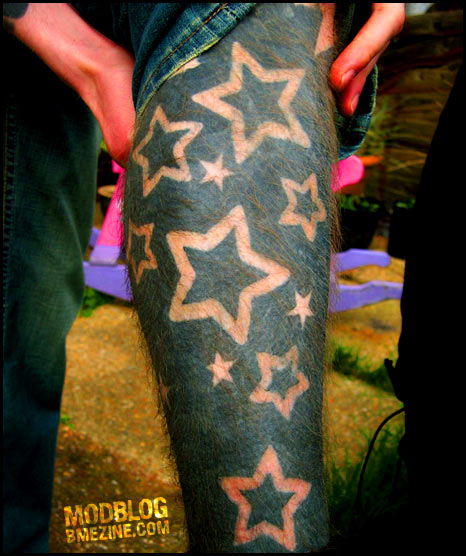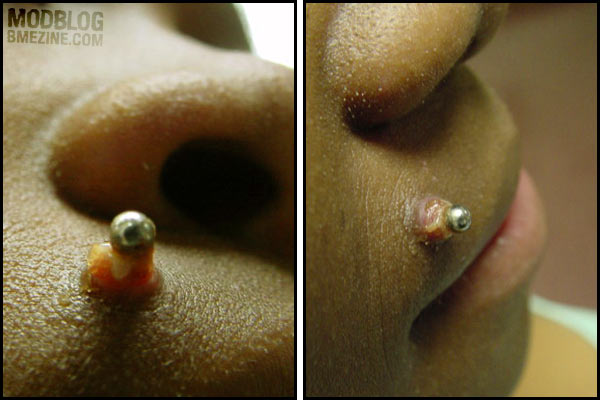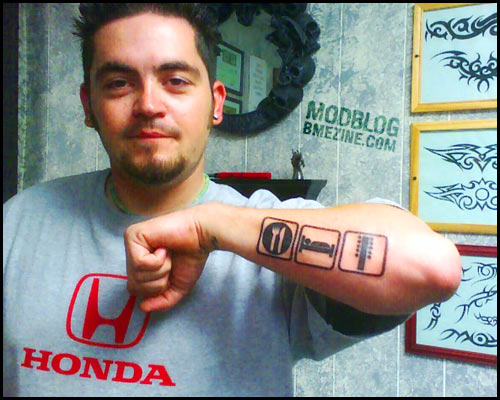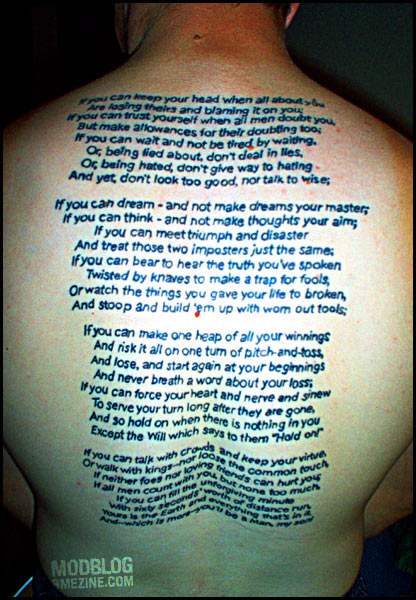This article comes to us from Indiana’s Fort Wayne News, dated January 5, 1899. These days body modification of animals (except maybe fish piercing) is almost, but not entirely, met with condemnation. I think back in 1899, humans were still connected enough to the process of farming that everyone understood that to condemn tattooing animals while at the same time killing them and eating them was somewhat ridiculous.
Or maybe they just didn’t care — vanity often drives cruelty. There was certainly a vegan animal rights movement at the time that opposed these acts, but they were in the deep minority.
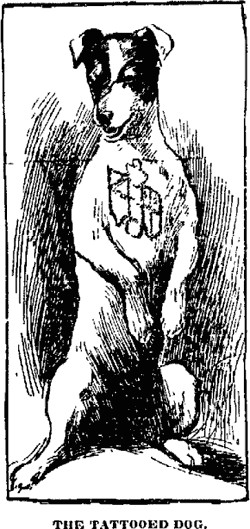 Fido May Sit on His Hind Legs and Exhibit a Tattooed Neck Decoration
Fido May Sit on His Hind Legs and Exhibit a Tattooed Neck Decoration
For years the world of fashion followed the rapid pace set by Mrs. Frederick Gebhard in the world of dogdom. Her pets were the sleekest, the most accomplished and the best groomed dogs of the South, where they were raised — for Miss Morris was a Southern girl — or of the North, where they spent their summers.
Now, for lack of a fashion leader, the owners of pet dogs must look all over the world and borrow the newest and prettiest from the dogs of all nations, as it were.
Lady Brassey’s poodles were the first “parted” dogs in London, and the Princess of Wales had the first true fox terrier of the drawing-room, but since then fashions and manners have been made for dogs until one’s pet must arise early and study all day long in order to be as up-to-date as the rest of the dog world.
The very latest for pet dogs is the monogram which is tattooed upon the animal in some conspicuous spot to become a permanent mark of ownership and personality.
The favorite tattoo is a monogram which is placed upon the dog’s breast just below his collar bone. Either his own monogram, or that of his mistress, is used, and a fancy scroll work may or may not be placed around it.
To get the monogram upon the dog’s breast a professional tattooer is employed, who works with a sharp needle, pricking the pigments into the tender skin, until it is perfectly tattooed. There are several professionals who make a specialty of this work, and can tattoo a very pretty monogram in a very few minutes. The process is necessarily painful, but so keen is the dog to any improvement upon himself that he patiently endures the pain.
Many professional tattooers are not working upon pet dogs, being quick to see that there is money in the world just at present. They make regular appointments, and call to see the victim at the set time. He, poor fellow, having been exercised and fed is found nicely warmed in a comfortable blanket, ready to be worked upon. At first the dog shows by mute signs that he does not like having the feeling of the needle, but on being admonished by his mistress he subsides and patiently endures the tattoo without a growl. Next day the tattooer calls to see the patient, and, if the work is complete, allows him his liberty again. Otherwise he is worked upon further and kept in warm quarters, with the finest and softest food furnished him at intervals as though he were a baby.
Ugly dogs are slow to tattoo, because they will not allow the tattooer to prick them more than once or twice; so he must make a great many trips and even then the monogram is ragged and out of shape. Fox terriers are the most patient of all.
No owner of a fine dog allows other than professional hands to though her pet, and a monogram for Fido is as expensive as one for his mistress.

 Fido May Sit on His Hind Legs and Exhibit a Tattooed Neck Decoration
Fido May Sit on His Hind Legs and Exhibit a Tattooed Neck Decoration
